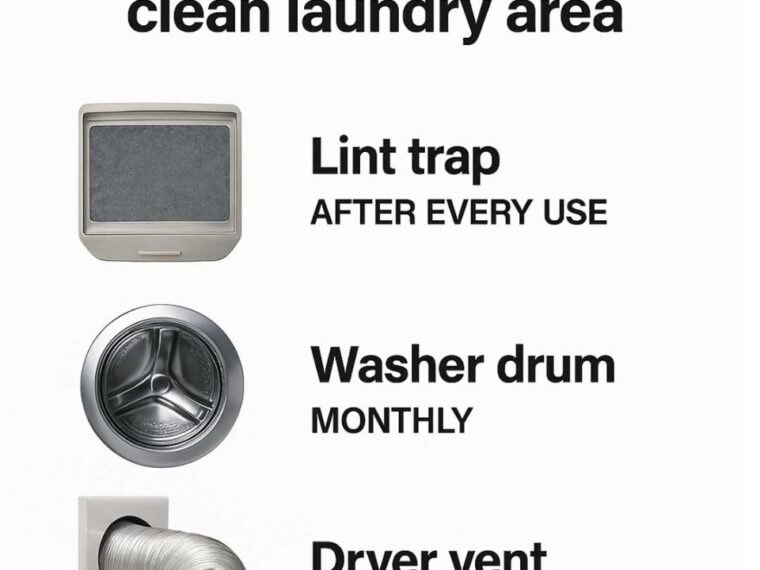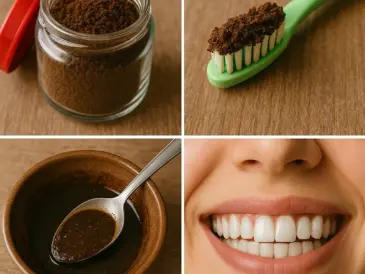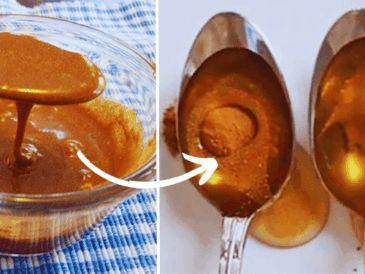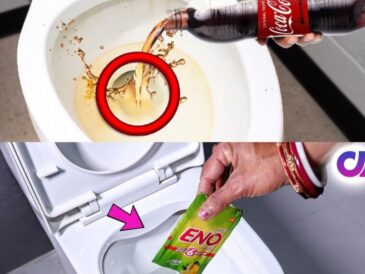The laundry area is often one of the most neglected spaces in a home when it comes to regular cleaning. Many people focus on washing clothes but forget that the machines and the space around them need attention too. A clean laundry area not only ensures that your clothes come out fresh and clean but also prolongs the life of your appliances and maintains a healthy environment in your home.
In this article, we will guide you through the essential cleaning tasks that should be part of your routine. From the lint trap to the utility sink, each component of your laundry area requires specific attention. By following these guidelines, you can ensure that your laundry space remains efficient, safe, and hygienic.
1. The Importance of a Clean Laundry Area
A clean laundry area is crucial for several reasons. First, it helps in maintaining the efficiency of your appliances. Dust, lint, and detergent residues can build up over time, causing your washer and dryer to work harder than necessary. This not only increases energy consumption but can also lead to costly repairs.
Moreover, a clean laundry area reduces the risk of fire hazards. Lint buildup, particularly in the dryer vent, is a common cause of household fires. Regular cleaning minimizes this risk. Additionally, a clean space prevents the growth of mold and mildew, which thrive in damp environments and can cause health issues.
2. Lint Trap: Clean After Every Use
The lint trap in your dryer should be cleaned after every use. This simple task takes only a few seconds but is crucial for the safety and efficiency of your dryer. Lint buildup can restrict airflow, causing the dryer to overheat and potentially start a fire.
To clean the lint trap, simply remove it from the dryer and use your fingers or a soft brush to remove the lint. If the trap is particularly dirty, you can wash it with warm, soapy water and let it dry completely before reinserting it.
3. Washer Drum: Monthly Maintenance
The washer drum should be cleaned monthly to prevent the buildup of detergent residue, dirt, and mold. To clean the drum, run an empty cycle with hot water and two cups of white vinegar. This helps to dissolve any residues and disinfect the drum.
After the vinegar cycle, run another cycle with hot water and half a cup of baking soda. This will help to neutralize any odors and further clean the drum. Leave the washer door open after cleaning to allow the drum to dry completely and prevent mold growth.
4. Dryer Vent: Every 3 Months for Safety
The dryer vent should be cleaned every three months to prevent lint buildup, which is a major fire hazard. Disconnect the dryer from the power source and detach the vent from the back of the dryer. Use a vacuum with a hose attachment to remove lint from the vent and the duct.
For a more thorough cleaning, use a dryer vent cleaning kit, which usually includes a brush that can reach deep into the duct. Reattach the vent and ensure it is properly secured before reconnecting the dryer to the power source.
5. Detergent Drawer: Monthly Cleaning
The detergent drawer in your washer can accumulate soap residue and mold, which can transfer to your clothes. To clean it, remove the drawer and soak it in warm, soapy water. Use a small brush to scrub away any buildup.
Rinse the drawer thoroughly and let it dry completely before reinserting it. Wipe down the compartment where the drawer sits to remove any remaining residue.
6. Laundry Room Floors: Weekly Sweep and Mop
The floors in your laundry room should be swept and mopped weekly to remove dust, lint, and detergent spills. Start by sweeping or vacuuming the floor to remove loose debris.
Then, mop the floor with a solution of warm water and a mild detergent. Pay special attention to corners and under appliances, where dirt tends to accumulate. Ensure the floor is completely dry to prevent slips and falls.
7. Utility Sink: Monthly Scrub
If your laundry area includes a utility sink, it should be scrubbed monthly to prevent soap scum and mineral deposits. Use a non-abrasive cleaner and a scrub brush to clean the sink, paying attention to the faucet and drain.
Rinse the sink thoroughly and wipe it dry with a clean cloth. Regular cleaning will prevent stains and keep the sink looking new.
8. Laundry Baskets: Biweekly Disinfection
Laundry baskets can harbor bacteria and odors, especially if they are used to transport dirty clothes. Disinfect them biweekly by wiping them down with a solution of water and white vinegar or a disinfectant spray.
Allow the baskets to air dry completely before using them again. If your baskets are made of fabric, consider washing them in the washing machine according to the care instructions.
9. Folding Tables: Weekly Wipe Down
Folding tables should be wiped down weekly to remove dust and lint. Use a damp cloth or an all-purpose cleaner to clean the surface.
If the table is used for folding clean clothes, ensure it is completely dry before placing clothes on it. Regular cleaning will keep the table free of dust and ready for use.
10. Shelving and Storage: Monthly Dusting
Shelving and storage areas in your laundry room should be dusted monthly to prevent the accumulation of dust and lint. Use a microfiber cloth or a duster to clean the surfaces.
Organize the items on the shelves as you clean, discarding any empty detergent bottles or expired products. This will keep the area tidy and make it easier to find what you need.
11. Light Fixtures: Quarterly Dust and Clean
Light fixtures in the laundry area should be dusted and cleaned quarterly to ensure they provide adequate lighting. Turn off the power to the fixtures before cleaning.
Use a soft cloth or a duster to remove dust from the fixtures. If the fixtures are particularly dirty, you can use a mild detergent solution to wipe them down. Ensure they are completely dry before turning the power back on.
12. Walls and Baseboards: Seasonal Deep Clean
The walls and baseboards in your laundry area should be deep cleaned seasonally to remove dust, lint, and detergent splashes. Use a damp cloth or a sponge with a mild detergent to wipe down the surfaces.
Pay special attention to areas behind and beside appliances, where dust tends to accumulate. Regular cleaning will keep the walls and baseboards looking fresh and prevent the buildup of grime.





